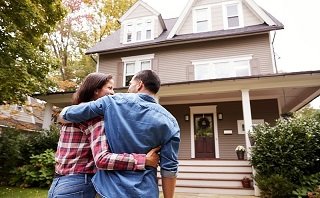With safety issues being a growing concern currently in our world more now than ever before, homeowners want to create beautiful spaces but also risk-free and resilient ones. It cannot be stressed enough how significant it is to design homes with safety in mind, as being safe and sound are fundamental prerequisites for the well-being of residents.
This in-depth guide strives towards the creation of a balanced blend between safety and style elements in home design. We take a closer look at different innovative and functional approaches, showing that safety elements can well be incorporated into any home without taking away its aesthetic value.
No matter if you are constructing a new home or renovating an existing space, this guide offers important information and successful tactics to make safety an integral aspect of your home design.
Know the Importance of Home Safety
Home safety refers to more than just stopping intruders, it involves a wider range of issues such as preventing accidents, ensuring that young children are safe and protecting oneself from the occasional unpredictable elements like weather conditions. A properly developed home takes all these into account, creating a harmonious balance between safety and comfort.
Assessing Risks and Needs
The first thing when designing a safe home is risk analysis. This covers the geographic location, whether or not there are children or elderly in a home and what their lifestyle habits consist of. For instance, houses in regions with insects need particular solutions such as Pleated Mosquito nets.
Child and Elderly Safety
Homes with children and elders require special care. They pose serious risks such as sharp corners, slippery surfaces and availability of hazardous materials. Rounded furniture, non-slip flooring and secure cabinets are design elements necessary.
Natural Disaster Preparedness
Homes may need to endure earthquakes, floods or storms based on the location. In such situations, reinforced structures, waterproofing and emergency exits are of paramount importance.
Implementing Safety Features in Home Design
Secure Entry Points
Doors and windows are the first line of defense. Fundamental features also include solid doors with high quality locks, and windows including durable frames and locks. Windows, for instance, options like invisible grills offer security without hindering views or aesthetics.
Lighting and Visibility
Properly illuminated exteriors and interiors discourage accidents, intrusions. Besides, transparent windows allow you to see outside and enable you to observe surroundings.
Fire Safety
Fire safety measures are unavoidable. Smoke detectors, fire extinguishers and an evacuation plan.The material for construction and interior design should be fire-proof or retardant.
Electrical Safety
Proper electrical planning prevents hazards. These should be adequate outlets to avoid overloading, safe locations away from water sources and the use of child proofing in households with children.
Structural Safety
The building structure should comply with local safety codes. This includes considering the bearing capabilities, use of quality materials and proper procedures during construction.
Safe and Functional Staircases
Staircases must provide strong railings, proper lighting and non-slip surfaces. For households that have small children, fitting safety gates at the top and bottom of stairs is highly recommended.
Integrating Technology for Enhanced Safety
Technology advancements provide many avenues to improve home safety. Automated locks, surveillance cameras and remote monitoring alarms can be incorporated in a smart home system.
Surveillance Systems
Cameras should be mounted in key areas across the house to observe activities. Modern systems provide aspects such as motion detection, night vision capability and remote access.
Automated Alarms and Locks
Automated systems are able to give real-time alerts for different emergencies, such as break-ins and fires. Smart locks provide a keyless entry and remote control of access.
Environmental Monitoring
Sensors detecting gas leaks, water and drastic temperature changes can prevent disasters. These systems can automatically shut down or alert the homeowner.
Regular Maintenance and Safety Audits
Regular checks and maintenance play a considerable role in keeping the home safe. This includes:
- Checking locks, alarms and other security devices.
- Structural damages or potential hazards.
- Making sure that all safety systems are working properly.
Conclusion
Designing a home with safety in mind is an extensive procedure that should be carried out very attentively and involves taking into account numerous aspects. Everything from structural integrity to integration of technology, each element is critical in ensuring a safe and comfortable place for life. With the help of these strategies, homeowners can design spaces that are not only visually appealing but also provide peace.

